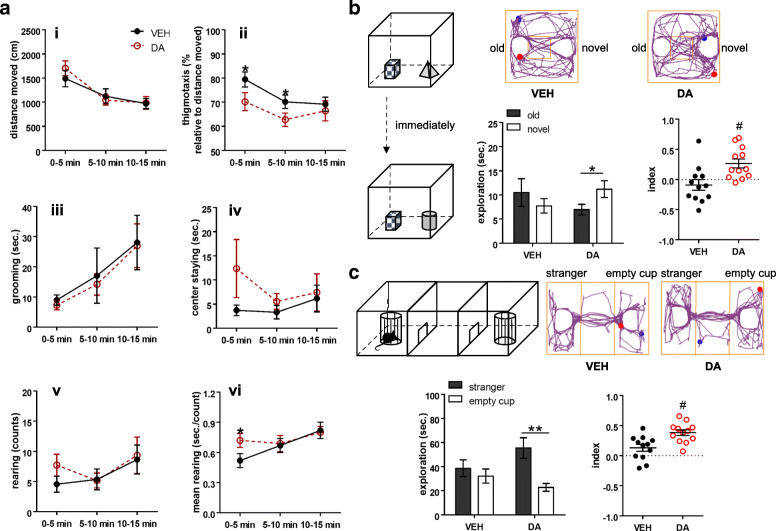Fig. 5.
Behavioral effects of intranasal dopamine on BTBR mice. a Behaviors measured in the open field test. The dopamine (DA)-treated group showed comparable distance travelled (i), self-grooming (iii), center staying (iv), and counts of rearing (v) to the vehicle (VEH)-treated group, except for a lower percentage of thigmotaxis at the time intervals 0–5 and 5–10 min (ii) and a longer duration of rearing in the first 5 min (vi). b Behaviors assessed in the object-based attention test. An example of movement tracking of a VEH- or DA-treated animal is illustrated. Blue and red dots indicate the start and end points of a test trial, respectively. Unlike the VEH-treated animals, the DA-treated ones exhibited the preference toward the novel object, and thus, showing positive values of the index. Index = [time spent on the novel object - time spent on the old object] / total exploration time. c Behaviors evaluated in the three-chamber social test. An example of movement tracking of a VEH- or DA-treated animal is presented. Blue and red dots indicate the start and end points of a sociability trial, respectively. The VEH-treated animals explored the stranger mouse and the empty cup equally, while the DA-treated ones showed the preference to the stranger mouse and had positive values of the sociable index. Index = [time for exploring the stranger mouse - time for exploring the empty cup] / total exploration time. n = 12 mice/group. *p < 0.05, **p < 0.01, compared to the respective values. #p < 0.05, compared to 0 by one sample t-test

